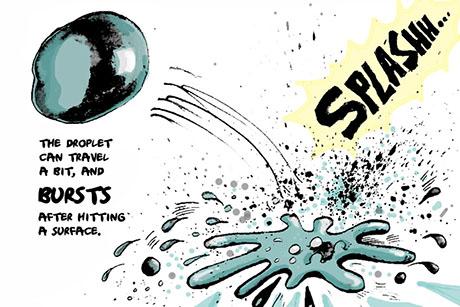Alumni Spotlight: Danielle Zurovcik (SM ’07, PhD ‘11)
CEO and Founder, WiCare
by Alissa Mallinson

Photo courtesy of Danielle Zurovcik
Danielle Zurovcik (SM ‘07, PhD ‘11) conducted her doctoral research on a high-tech medical device, but in her free time, she followed her passion for a low-tech wound therapy device that led her to start a global medical device company called WiCare.
Negative pressure wound therapy (NPWT) is a relatively new technique that applies a vacuum pressure to an open wound. It stresses the cells and causes them to divide, brings blood to the area, removes infectious fluids, and provides a healthier healing environment. It’s been shown to significantly decrease healing time from months to just weeks. It prevents infections and requires less care and materials than traditional wound therapy, decreasing dressing changes from once a day to once every three to five days and requiring less nursing support as a consequence.
According to Zurovcik, current NPWT devices cost $100 a day to rent and 70 watts of power. For a typical 6-week therapy timeframe, that comes to more than $4,000. But how could a device with such simple mechanics be so expensive?
“If you look at it from a fundamental physics-based perspective, you have to question why it costs so much to apply a low-vacuum pressure to a wound,” says Zurovcik. “The answer is based on the fact that you’re putting a planar system on contoured skin, causing many wrinkles and bends to develop that create air leaks. As a result, the device is continuously sucking in air, up to 13 liters per minute, and the patient is paying for the device to constantly overcome its own inefficiencies.”
As part of her master’s degree research in the MIT Department of Mechanical Engineering, Zurovcik was one of the first to identify the significance of the air leak – not only its relationship to NPWT success but also to the unnecessary amount of energy needed to power it. After years of research, experience, and experimentation, she understood that the most important elements of maintaining an airtight seal were material and, even more importantly, application method. But if you can overcome these obstacles, she says, you can decrease power usage from 70 watts to 20 microwatts.
Zurovcik did exactly that.
“Current dressings on the market have freedom of application, meaning they allow for the possibility of air leaks,” she says. “So application method is very important to address even before you create a design. If you have the freedom to apply it incorrectly, the design could be rendered useless.”
When she arrived in Rwanda to conduct clinical trials, Zurovcik was able to visualize problems and adjust the device immediately.
“I was hand making all my dressing designs at night and applying them in the field the next day, visualizing any issues and promptly using the data I gathered that day to make a better one that very night, while staying within the limits of our protocol,” she explains.
When she returned to MIT that fall, she was able to finalize her best design, which in part consisted of a new way of making wound dressings from scratch without using electricity. She invented a new dressing material – a new polymer mixture that eliminates the necessity of a fixed shape and conforms to the skin, utilizing its natural properties to create a stronger bond. Just as importantly, she also invented a new application method that eliminates the risk of bridges over the skin contours and subsequent air leaks.
Having found the perfect recipe of airtight application method and effective, inexpensive design, Zurovcik, who also has a minor in business from the MIT Sloan School of Management, started WiCare as a means of distributing her product to emerging markets. She plans to first prove the device in the US market – which, at $2 billion, still only treats a fraction of patients who could benefit from NPWT – but a key element of her design is a price point that fits emerging markets.
“My goal with WiCare is to design global medical devices that are affordable for the bottom of the pyramid but are just as effective as those created for the top of the pyramid,” says Zurovcik.


